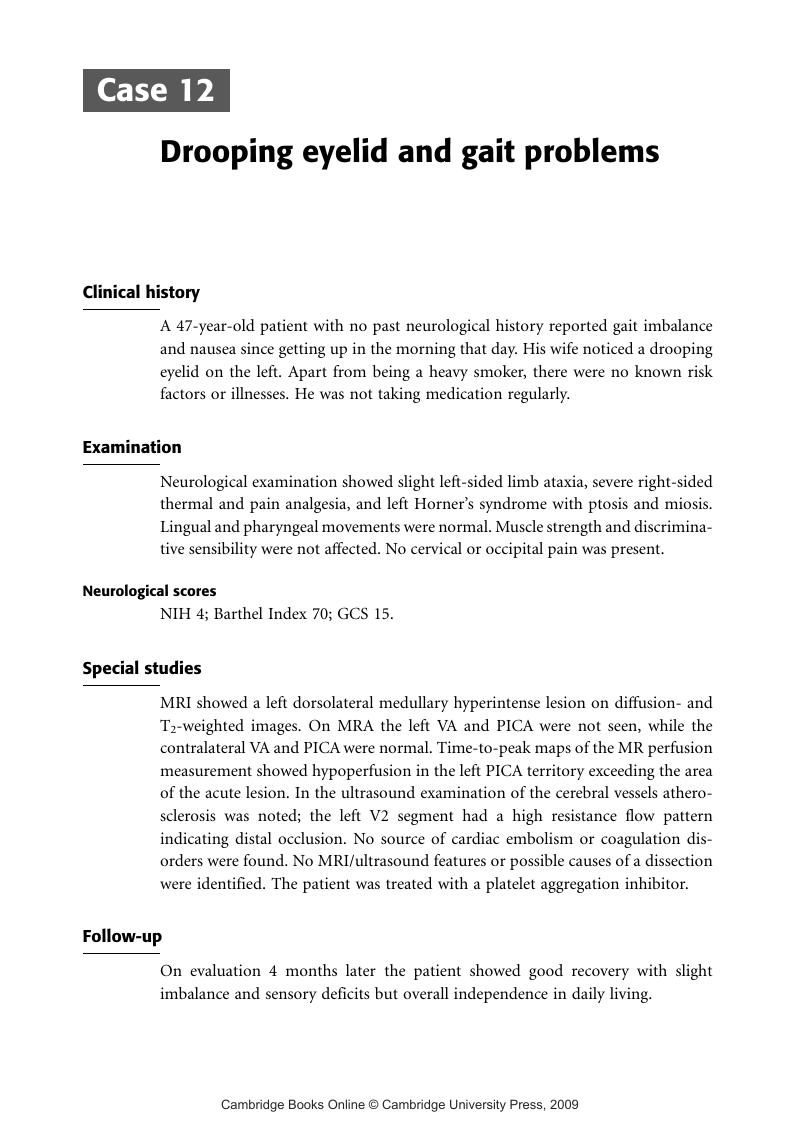Book contents
- Frontmatter
- Contents
- The following cases described herein have been published previously
- List of contributors
- List of abbreviations
- Preface
- Introduction
- Part I Common cases of stroke
- Case 1 Dysarthria and clumsy hand syndrome
- Case 2 Sudden numbness of the right extremities
- Case 3 A 52-year-old woman with sudden hemiparesis
- Case 4 Sudden difficulty reading the left side of the morning paper
- Case 5 An 85-year-old man with difficulty expressing himself on the telephone
- Case 6 Transient loss of vision
- Case 7 Massive intracerebral hemorrhage
- Case 8 Tinnitus during cycling in an orthopedic surgeon
- Case 9 Headache after an exhausting tennis match
- Case 10 Anticoagulation-associated hemorrhage
- Case 11 Worst headache of his life
- Case 12 Drooping eyelid and gait problems
- Part II Uncommon cases of stroke
- Index
- References
Case 12 - Drooping eyelid and gait problems
from Part I - Common cases of stroke
Published online by Cambridge University Press: 23 November 2009
- Frontmatter
- Contents
- The following cases described herein have been published previously
- List of contributors
- List of abbreviations
- Preface
- Introduction
- Part I Common cases of stroke
- Case 1 Dysarthria and clumsy hand syndrome
- Case 2 Sudden numbness of the right extremities
- Case 3 A 52-year-old woman with sudden hemiparesis
- Case 4 Sudden difficulty reading the left side of the morning paper
- Case 5 An 85-year-old man with difficulty expressing himself on the telephone
- Case 6 Transient loss of vision
- Case 7 Massive intracerebral hemorrhage
- Case 8 Tinnitus during cycling in an orthopedic surgeon
- Case 9 Headache after an exhausting tennis match
- Case 10 Anticoagulation-associated hemorrhage
- Case 11 Worst headache of his life
- Case 12 Drooping eyelid and gait problems
- Part II Uncommon cases of stroke
- Index
- References
Summary

- Type
- Chapter
- Information
- Case Studies in StrokeCommon and Uncommon Presentations, pp. 60 - 64Publisher: Cambridge University PressPrint publication year: 2006



